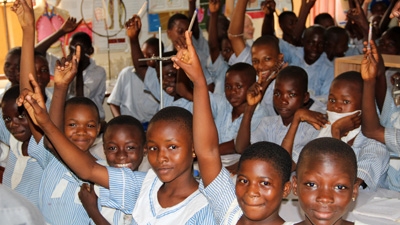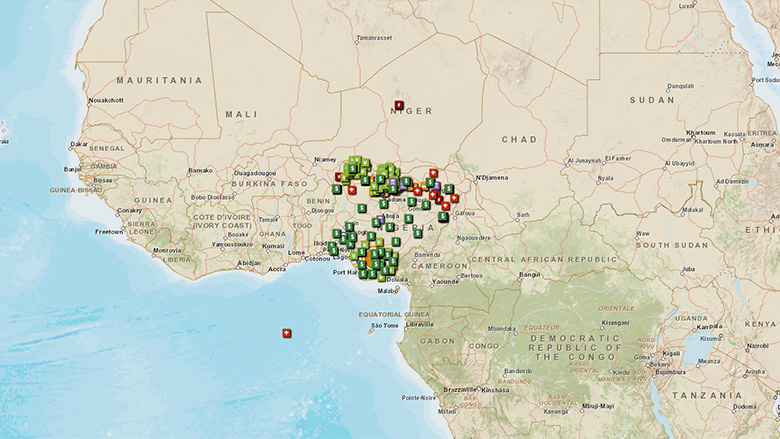Challenge
In 2007, Nigeria’s education sector was managed by the federal government, states, and local authorities, and suffered from a fragmented decision making process and unclear management roles. The system suffered from inequitable access, poor planning and management, and inadequate funding. Enrollment rates – 64% for boys and 57% for girls, overshadowed more extreme enrollment deficiencies in low-income and Northern areas. With a total population of 160 million, Nigeria contributes about 30-40% of the world’s total number of out-of-school children. A high level of unqualified teachers, a wide range of teacher-student ratios, and a low level of efficiency in spending public education funds plagued the sector. While Nigeria enjoyed relatively strong economic growth as the world’s sixth leading exporter of oil, the economy outside of this sector was anemic, and Nigeria sat among the poorest countries in the world, with a per capita income of under $500.
Solution
Nigeria’s State Education Sector Project (SESP) was launched to involve states and local authorities in developing the work force by improving primary and lower secondary education. The states of Kaduna, Kano, and Kwara were specifically targeted as the most in need of improvement by the project. Individual schools in targeted areas with low participation levels, especially for girls, were given greater autonomy by receiving grants to develop their own teaching force, school materials, and management capacity. The “whole school” approach incorporated simultaneous infrastructural and educational improvements. The State Ministries of Education and Local Government Education Authorities were also targeted for institutional development focusing on strengthening education management information systems, capacity development, and strengthening the Inspectorate.
Results
Participation levels were positively influenced by the project. From 2007 to 2011 primary completion rates for girls increased from:
- 17.4% to 41% in Kaduna
- 49% to 55% in Kano
- 45% to 50% in Kwara
Over the same period, rates for boys increased from:
- 23.5% to 52% in Kaduna
- 57% to 70.9% in Kano
- 50% to 57% in Kwara
These increases easily exceeded targets in each of the three states. The states also saw 83% of their literacy and numeracy targets met since 2007. Junior Secondary School (JSS) completion rates saw similarly successful increases, with girls’ rates rising from:
- 7% to 34.16% in Kaduna
- 2.82% to 8.67% in Kano
- 40% to 54% in Kwara
Over the same period, rates for boys increased from:
- 10% to 46.16% in Kaduna
- 20% to 36.09% in Kano
- 34% to 61% in Kwara
Additionally, 1,974 targeted schools implemented approved school development plans and received grants. Across the states, 6,456 teachers were trained through a professional development program that led to 99.3% of teachers using curriculum guides effectively.
Bank Group Contribution
The International Development Association (IDA) was able to use its strong history of involvement in the education sector to lead the SESP and to coordinate other development partners along the lines of state-specific education programs. IDA contributed US$63.74 million to the project, which amounted to about 97% of the project’s budget. Specifically, US$19.09 million went to the school development scheme, US$38.41 million to quality improvement, US$3.65 million to institutional development, and US$4.25 million to project management.
Partners
Nigeria’s State Ministry for Education was the implementing agency for disbursement of project funds. Local government authorities in targeted regions were an integral part of the project and benefitted from institutional strengthening support. The project’s sustainability was enhanced through the involvement of development partners in Nigeria, such as the U.K. Department for International Development and the United Nations Children’s Fund (UNICEF).
Moving Forward
The post-completion operation was brought into the fold of the State Ministries of Education and the State Universal Basic Education Board with trained resources, equipment and logistics. The Kano State Government has embarked on school feeding and free uniforms to build on increases in girls’ primary enrollment and completion. Budget lines of States will sustain the various institutional development achieved by the project.
Beneficiaries
The SESP has supported programs throughout several states, including the SDP and SMBC (but we need the full names of these programs). These projects have provided textbooks, additional classrooms and an office, increased student attendance and parental involvement.
"The classrooms have become decongested and as such the teacher and pupils find the environment more conducive for learning and teaching," said a trader from the Ungogo Gabas in Ungogo Local Government Authority, Kano State. "There are more pupils now than the period before the project."
A carpenter from Rimin Gata Village agreed.
“The teachers can now mark assignments immediately in class unlike before, when there were no chairs and desks and they had to take all the marking home to do,” he said.
A community member indicated that the SBMC and school grant has made a difference. “Thanks to this plan, the number of females students has almost doubled, and the male students who did not participate in school activities are now very interested.

